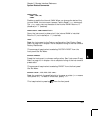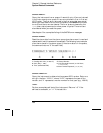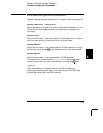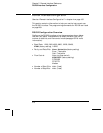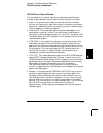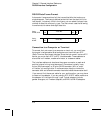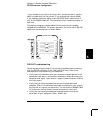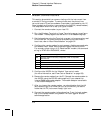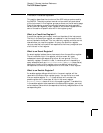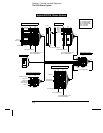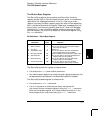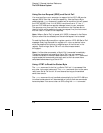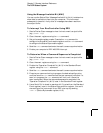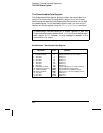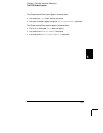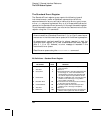
The SCPI Status System
This section describes the structure of the SCPI status system used by
the 34970A. The status system records various conditions and states
of the instrument in five register groups as shown on the following page.
Each of the register groups is made up of several low-level registers
called Condition registers, Event registers, and Enable registers which
control the action of specific bits within the register group.
What is a Condition Register?
A condition register continuously monitors the state of the instrument.
The bits in the condition register are updated in real time and the bits
are not latched or buffered. This is a read-only register and bits are not
cleared when you read the register. A query of a condition register
returns a decimal value which corresponds to the binary-weighted sum
of all bits set in that register.
What is an Event Register?
An event register latches the various events from the condition register.
There is no buffering in this register; while an event bit is set,
subsequent events corresponding to that bit are ignored. This is a
read-only register. Once a bit is set, it remains set until cleared by a
query command (such as STATus:OPER:EVENt?) or a *CLS (clear status)
command. A query of this register returns a decimal value which
corresponds to the binary-weighted sum of all bits set in that register.
What is an Enable Register?
An enable register defines which bits in the event register will be
reported to the Status Byte register group. You can write to or read
from an enable register. A *CLS (clear status) will not clear the
enable register but it does clear all bits in the event register.
A STATus:PRESet clears all bits in the enable register. To enable bits
in the enable register to be reported to the Status Byte register, you must
write a decimal value which corresponds to the binary-weighted sum of the
corresponding bits.
5
Chapter 5 Remote Interface Reference
The SCPI Status System
275



